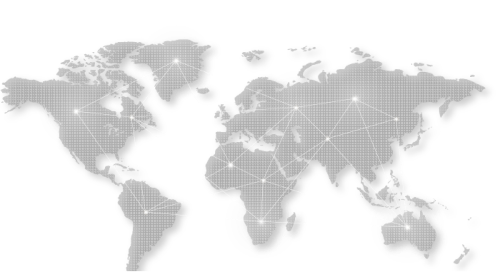
Back pain is a common complaint that affects millions of people worldwide. Whether it’s a sharp, acute pain or a dull, chronic ache, back pain can be debilitating, interfering with daily activities and diminishing quality of life. Thankfully, numerous therapies and treatments can help alleviate pain, speed up recovery, and restore mobility. However, the right treatment often depends on the type of back pain a person is experiencing.
At Thrive Physical Therapy, experts use a holistic and personalized approach to treat back pain, offering targeted therapies that focus on addressing the root causes and relieving discomfort. Here, we’ll explore effective therapies for various types of back pain, focusing on strategies that have been proven to work.
Understanding Different Types of Back Pain
Before diving into therapies, it’s important to understand the different types of back pain. While most people experience some form of discomfort in their backs, the pain may present in various ways.
- Acute Pain: This type of pain is typically short-lived, lasting anywhere from a few days to a few weeks. It often occurs after an injury or strain, such as lifting something heavy or sudden movement that causes muscle sprains. Acute pain is often sharp and localized in one area of the back.
- Chronic Pain: Chronic pain is long-lasting, persisting for months or even years. This type of pain may be related to underlying conditions such as degenerative disc disease, arthritis, or scoliosis. Chronic back pain tends to be more persistent and may come and go in intensity.
- Radicular Pain: Radicular pain is caused by irritation or compression of a nerve root in the spinal cord, leading to pain radiating from the back to the legs or arms. Conditions like sciatica can cause this type of pain, which is often sharp and shooting in nature.
- Muscle Strain: Muscle strains can cause localized, tender pain in the back. This type of pain usually results from overexertion or poor posture, leading to overstretched or torn muscles.
- Degenerative Pain: Over time, the spine’s discs and joints can degenerate due to aging or wear and tear, leading to pain that worsens over time. Degenerative disc disease or osteoarthritis are common causes of this pain.
- Inflammatory Pain: Conditions such as ankylosing spondylitis or other autoimmune diseases can lead to inflammation in the spine, causing deep, throbbing pain.
Each type of back pain requires a different approach to therapy. Let’s explore some of the most effective treatments for these conditions.
Therapies for Acute Back Pain
For individuals experiencing acute back pain, the goal is to reduce inflammation and promote healing without aggravating the condition. Thrive Physical Therapy specializes in techniques designed to target and reduce pain rapidly.
Physical Therapy and Manual Therapy: Manual therapy includes hands-on techniques such as massage, joint manipulation, and mobilization to restore normal movement and reduce pain. These methods can ease muscle tension and improve blood flow, which aids in healing.
Heat and Cold Therapy: Applying ice packs or heat pads can help reduce swelling and alleviate pain. Cold therapy is especially effective in the first 48 hours after an injury, while heat therapy can promote muscle relaxation in the days following.
Stretching and Strengthening Exercises: Gentle stretching can relieve tight muscles, while strengthening exercises are designed to support the back and prevent further injury. A physical therapist may suggest specific exercises that help improve flexibility and increase core strength, which is essential for back health.
Addressing Chronic Back Pain
Chronic back pain can be more complex, often requiring a combination of therapies and lifestyle adjustments. The key to managing chronic pain is focusing on long-term relief strategies and improving posture and spinal alignment.
Postural Correction: Poor posture is a significant contributor to chronic back pain. Physical therapists work with patients to improve their posture through various exercises and techniques. Proper posture helps redistribute the weight of the body and reduces strain on the spine.
Strengthening the Core Muscles: The muscles of the abdomen and back play a pivotal role in supporting the spine. Targeted exercises that focus on strengthening the core can significantly reduce the strain on the back and prevent pain from recurring.
Dry Needling: This technique involves inserting thin needles into trigger points in the muscles to relieve pain and muscle tightness. Dry needling can be particularly effective for those suffering from chronic muscle spasms or tightness.
Pain Management: In some cases, patients with chronic back pain may need to explore additional pain management options, such as anti-inflammatory medications or muscle relaxants. A physical therapist can collaborate with other healthcare providers to ensure a comprehensive approach to managing pain.
Ergonomics at Work: For those who spend long hours sitting, poor ergonomics can aggravate chronic pain. At Thrive Physical Therapy, therapists assess your workstation setup and provide recommendations on how to sit and stand in a way that minimizes strain on the back.
Therapies for Radicular Pain
Radicular pain, such as sciatica, occurs when a nerve is compressed or irritated. This type of pain can radiate from the lower back down to the legs, causing intense, sharp pain or numbness. Addressing radicular pain requires techniques that focus on reducing pressure on the nerves.
Spinal Decompression Therapy: This therapy involves gentle stretching of the spine to relieve pressure on the discs and nerves. Spinal decompression can help reduce pain and improve mobility by restoring normal disc alignment.
Nerve Gliding Exercises: Nerve gliding exercises are specifically designed to reduce nerve tension and improve nerve mobility. These exercises can help alleviate the shooting pain associated with radicular conditions by gently stretching the affected nerves.
Electrical Stimulation: Techniques like TENS (transcutaneous electrical nerve stimulation) are used to block pain signals from reaching the brain, offering temporary relief from nerve-related pain.
Injections or Medications: In more severe cases, corticosteroid injections may be recommended to reduce inflammation around the nerve. These injections can provide relief from intense radicular pain and allow patients to engage in physical therapy more effectively.

Effective Approaches for Muscle Strain and Injury
When back pain is caused by a muscle strain or sprain, the focus is on alleviating tension, restoring mobility, and preventing re-injury.
Massage Therapy: Targeted massage can release muscle knots, improve circulation, and promote relaxation. Regular massage therapy is particularly helpful for those experiencing muscle tightness that contributes to pain.
Active Release Therapy (ART): ART is a soft tissue management technique that helps break down scar tissue and adhesions in the muscles, tendons, and ligaments. It’s particularly useful for people with muscle strains or repetitive motion injuries.
Stretching and Mobility Exercises: A physical therapist will design a customized stretching and strengthening routine to restore flexibility and prevent future strains. These exercises will focus on improving range of motion and releasing muscle tightness that might be contributing to discomfort.
Therapies for Degenerative Pain
Degenerative pain, caused by conditions like arthritis or disc degeneration, often requires long-term management strategies aimed at reducing inflammation, strengthening muscles, and maintaining joint function.
Low-Impact Exercise: Low-impact activities, such as swimming or cycling, are ideal for those with degenerative pain because they don’t put excessive pressure on the joints. These activities can help maintain joint mobility and reduce stiffness.
Joint Mobilization: Physical therapists may use joint mobilization techniques to improve the movement of the spinal joints and reduce pain associated with degenerative changes.
Anti-Inflammatory Therapy: Chronic inflammation can be managed through physical therapy modalities like ultrasound therapy or the application of ice packs. These therapies can reduce inflammation in the muscles and joints, providing some relief from the discomfort associated with degenerative conditions.
Inflammatory Pain Therapies
For those dealing with inflammatory conditions such as ankylosing spondylitis, the approach focuses on reducing inflammation and preventing joint fusion.
Stretching and Postural Exercises: Maintaining flexibility and good posture is critical for managing inflammatory conditions. Physical therapists guide patients through exercises that can keep the spine mobile and prevent it from becoming stiff and fused.
Medications and Biological Therapies: In some cases, patients may need to take medications, including biologics or anti-inflammatory drugs, to manage inflammation. A physical therapist will work with other healthcare providers to integrate therapy into a comprehensive pain management plan.
Suggested Reading: Back Pain Treatment: Physical Therapy vs. Chiropractic Care
Conclusion
Back pain is a complex condition that requires a tailored approach to treatment. Whether it’s acute pain from a recent injury, chronic discomfort from a degenerative condition, or radicular pain radiating from the spine, therapies must be customized to suit the specific needs of the patient. Thrive Physical Therapy offers an effective, hands-on approach to back pain management, utilizing various techniques such as manual therapy, physical exercises, and cutting-edge treatments like dry needling and spinal decompression. By addressing the root causes of pain and improving mobility, Thrive Physical Therapy helps patients recover, regain strength, and return to their normal routines with minimal discomfort.
If you’re struggling with back pain, don’t wait to get the help you need. Visit Thrive Physical Therapy at https://thriveptclinic.com/ to learn more about the therapies and treatments that can help you live pain-free.

